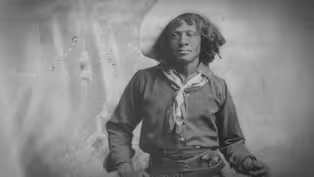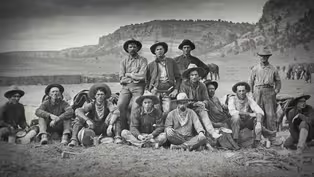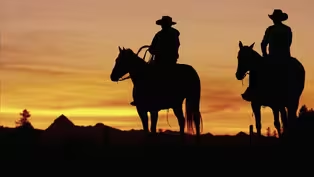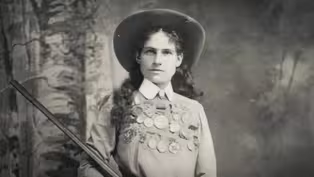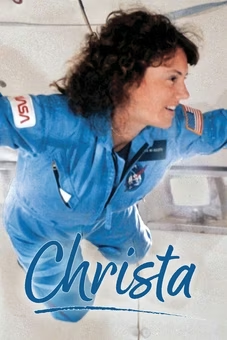
Buffalo Bill Helps Spread the Cowboy Mystique
Clip: Episode 4 | 3m 12sVideo has Closed Captions
Wild West Shows led to a skewed perspective of the role of real cowboys in America.
Buffalo Bill and his Rough Riders' dramatic reenactments of conflicts such as The Battle of Summit Springs cast cowboys as heroic fighters, coming in to save the day against "hostile" Native Americans. The international success of these Wild West Shows led to a skewed perspective of the role of real cowboys in the American West.
Problems playing video? | Closed Captioning Feedback
Problems playing video? | Closed Captioning Feedback
Iconic America: Our Symbols and Stories with David Rubenstein is a production of Show of Force, DMR Productions, and WETA Washington, D.C. David M. Rubenstein is the host and executive...

Buffalo Bill Helps Spread the Cowboy Mystique
Clip: Episode 4 | 3m 12sVideo has Closed Captions
Buffalo Bill and his Rough Riders' dramatic reenactments of conflicts such as The Battle of Summit Springs cast cowboys as heroic fighters, coming in to save the day against "hostile" Native Americans. The international success of these Wild West Shows led to a skewed perspective of the role of real cowboys in the American West.
Problems playing video? | Closed Captioning Feedback
How to Watch Iconic America
Iconic America is available to stream on pbs.org and the free PBS App, available on iPhone, Apple TV, Android TV, Android smartphones, Amazon Fire TV, Amazon Fire Tablet, Roku, Samsung Smart TV, and Vizio.
Buy Now
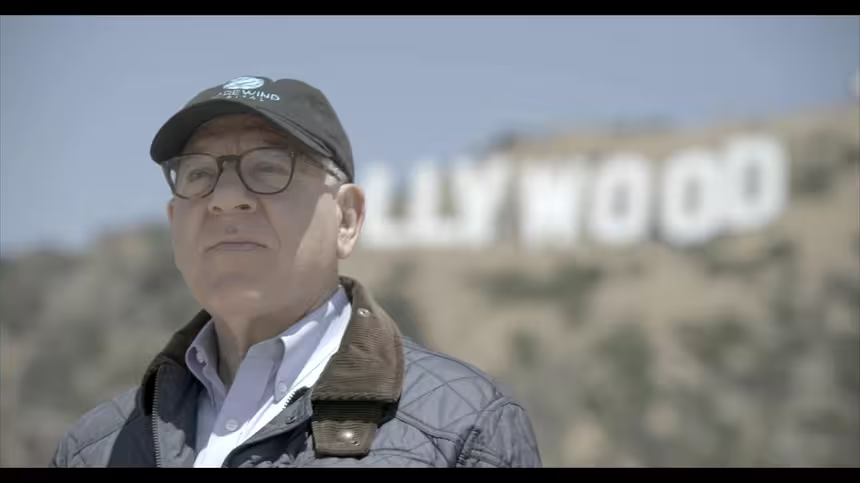
Our Symbols and Stories
David Rubenstein examines the history of America through some of its most iconic symbols, objects and places, in conversation with historical thinkers, community members and other experts. Together, they dive deep into each symbol’s history, using them as a gateway to understanding America’s past and present.Providing Support for PBS.org
Learn Moreabout PBS online sponsorship- Buffalo Bill presented the real Lakota Indians that people had read about in the dime novels who would attack the stage coach and then Buffalo Bill started recruiting more and more cowboys.
He presented dramatic reenactments like the Battle of Summit Springs and, of course, then the cowboys save the day.
Not only was Buffalo Bill conveying this idea to Americans but Buffalo Bill also took the show overseas and was an international hit.
He appeared before Queen Victoria, he appeared in France, Spain, Italy, Germany, the Austro-Hungarian Empire.
So a lot of Europeans were exposed to the cowboy as the ideal American.
- So why would somebody named Bill Cody call himself Buffalo Bill Cody rather than cowboy Bill Cody?
- He wasn't really a cowboy.
- What is a cowboy?
- A cowboy is basically a common worker, no different than a coal miner or a lumberjack.
But with this difference, they were given a lot of trust.
They were really independent workers.
They did not have a foreman breathing down their neck.
A lot of people thought that cowboys were just these ruffians that came into town and shot the place up.
I don't think they really realized the important role cowboys were playing and feeding the growing United States.
So we're going into the Buffalo Bill vault where we keep our Buffalo Bill collections.
So this is about as close as you'll ever come to rummaging through Buffalo Bill's closet.
This was worn by Buffalo Bill Cody while he was performing in the Wild West.
- [David] This was actually worn by him?
- Yes and all of the bead work was completed by the Lakota women who were traveling along with the Wild West.
You can see it's really quite cross-cultural because you have the bead work as well as the European style, but the fringes, the bead work all reflective of the Plains Indian culture.
But you can imagine when he rises into the arena, all the sunlight would've been reflecting off of the buttons, the bead work.
The other thing too about Buffalo Bill was he was quite interested in recreating some of the more contemporary events.
So here you'll see in the back of the jacket, the American flag and the Cuban flag.
He was quite a supporter of the Cuban revolutionaries and the independence movement there.
In fact, he brought in some Cubans to travel with the Wild West in the 1990s.
- Where did you get this?
- This came from the family and this is one of the few objects that we will allow visitors to handle.
So this is actually a hat that belonged to Buffalo Bill Cody.
You could put this on and say you've actually worn Buffalo Bill's hat.
- Wow, all right, here I am with Buffalo Bill's hat.
I hope he's not turning over in his grave as I... - I think you're ready for the rodeo.
- I should have been a cowboy.
I always had it in my mind to be a cowboy.
Video has Closed Captions
Preview: Ep4 | 31s | The cowboy is the quintessential American — fiercely independent, brave and laconic. (31s)
The Homestead Act Spurs Westward Expansion
Video has Closed Captions
Clip: Ep4 | 3m 35s | The Homestead Act attracted thousands of settlers to The West with 160 acres of free land. (3m 35s)
Philip Morris' Marlboro Man Lassoes a Hit Ad Campaign
Video has Closed Captions
Clip: Ep4 | 1m 3s | The appeal and success of the Marlboro Man cigarette ad campaigns spanned decades. (1m 3s)
Why Did Cowboy Movies Leave Women Out of the Picture?
Video has Closed Captions
Clip: Ep4 | 1m 55s | Westerns downplayed the role that women and minorities played in settling The West, (1m 55s)
Providing Support for PBS.org
Learn Moreabout PBS online sponsorshipSupport for PBS provided by:
Iconic America: Our Symbols and Stories with David Rubenstein is a production of Show of Force, DMR Productions, and WETA Washington, D.C. David M. Rubenstein is the host and executive...
